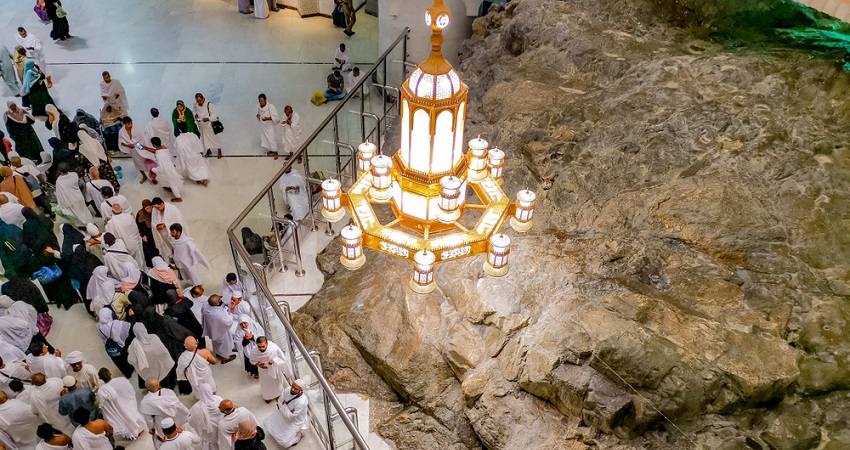Al-Safa and Al-Marwah are two mountains located to the east of the Holy Mosque, and are well-known symbols of the rite of Sa'i. Al-Safa and Al-Marwah consisted of a hill in the middle of Mecca, surrounded by the houses of the people of Mecca, including Dar Al-Arqam, the House of Al-Sa’ib bin Abi Al-Sa’ib Al-A’idhi and others. Jabal Al-Safa was connected to Mount Abu Qubais and Al-Marwah was connected to Mount Qaiqa’an. When the Saudi expansion came in 1375 AH, Jabal Al-Safa was cut off from its origin. Mount Abu Qubais, and I kept some of the rocks at the end of it marking the location of Al-Sha’ar, and I did the same for Al-Marwah Mountain, but for the presence of two levels of the sanctuary on the Al-Marwah side, two entrances were made: a higher entrance to the upper floor, which is equal to the height of Mount Al-Marwah in the ascending direction, and an entrance at the bottom that remained to connect with Al-Marwah Its origin is Jabal Qaiqa'an, and it has had its share of cutting, cracking and reduction on its eastern and western sides and on top. The beginning of the quest between Safa and Marwa dates back to the time of the Prophet Ibrahim, where Hagar is considered the first to savior between Safa and Marwa, when she was seeking water for her son, the Prophet Ismail. At the place of Zamzam, she drank and nursed her son. When Islam came, it made it one of the rituals of Hajj and Umrah. The road that connects between Safa and Marwa is called Mas’a, or the place of pursuit, and the Mas’a is now inside the Grand Mosque as a result of the Saudi expansion that took place in 1375 AH. The distance between Safa and Marwa is 394.5 metres, some say it is 405 metres, and some say it is 375 metres, and the total number of runs for the saa’ is 2761.5 metres, when calculated as 394.5 metres. The width of the endeavor is 40 meters, and the number of its floors is four, with a total area of more than 87 thousand square meters


